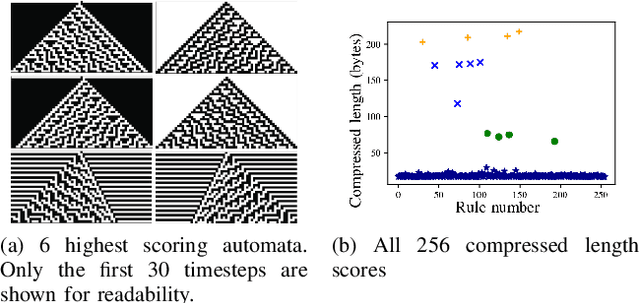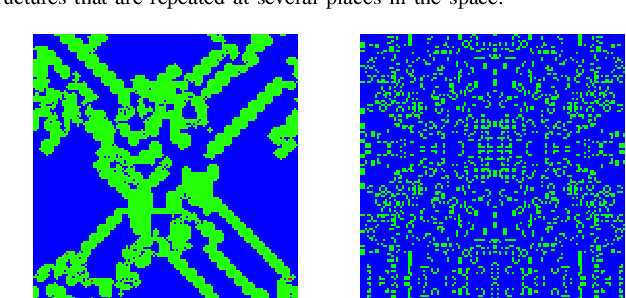Evolving Structures in Complex Systems
Paper and Code
Nov 04, 2019



In this paper we propose an approach for measuring growth of complexity of emerging patterns in complex systems such as cellular automata. We discuss several ways how a metric for measuring the complexity growth can be defined. This includes approaches based on compression algorithms and artificial neural networks. We believe such a metric can be useful for designing systems that could exhibit open-ended evolution, which itself might be a prerequisite for development of general artificial intelligence. We conduct experiments on 1D and 2D grid worlds and demonstrate that using the proposed metric we can automatically construct computational models with emerging properties similar to those found in the Conway's Game of Life, as well as many other emergent phenomena. Interestingly, some of the patterns we observe resemble forms of artificial life. Our metric of structural complexity growth can be applied to a wide range of complex systems, as it is not limited to cellular automata.
 Add to Chrome
Add to Chrome Add to Firefox
Add to Firefox Add to Edge
Add to Edge